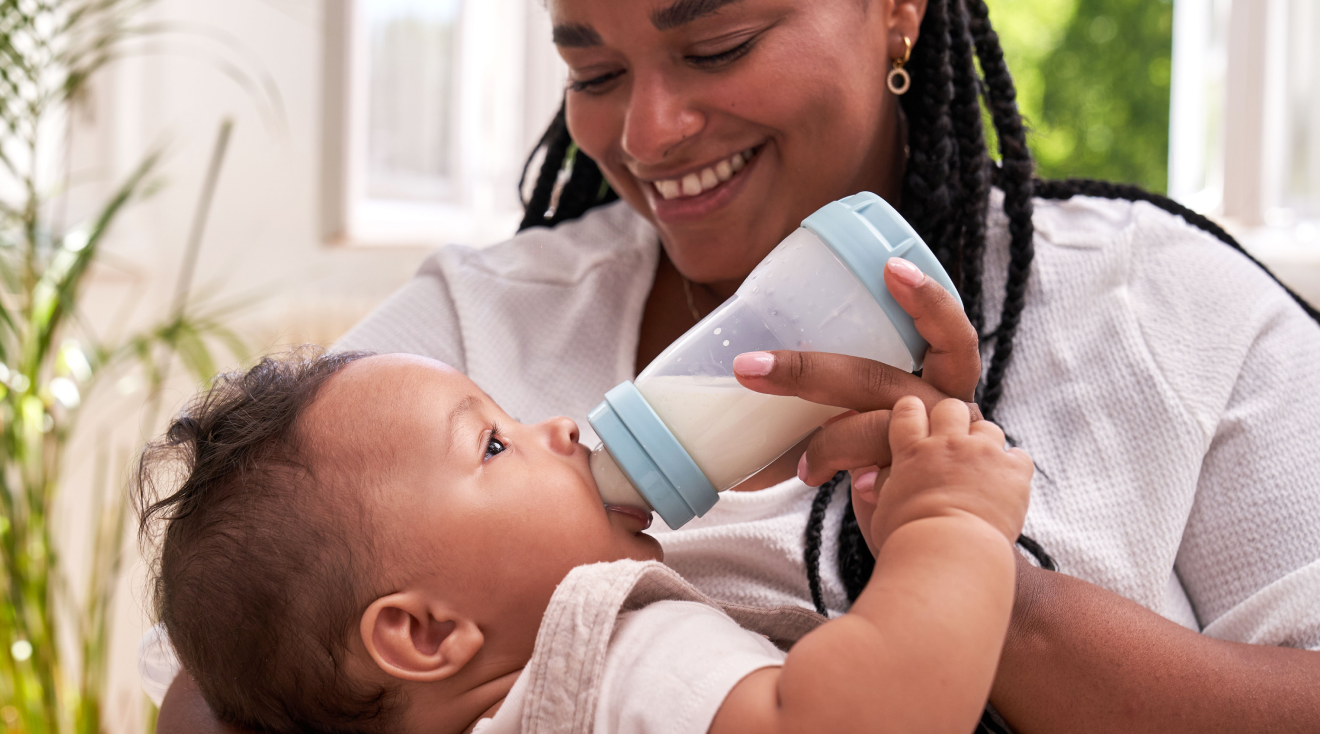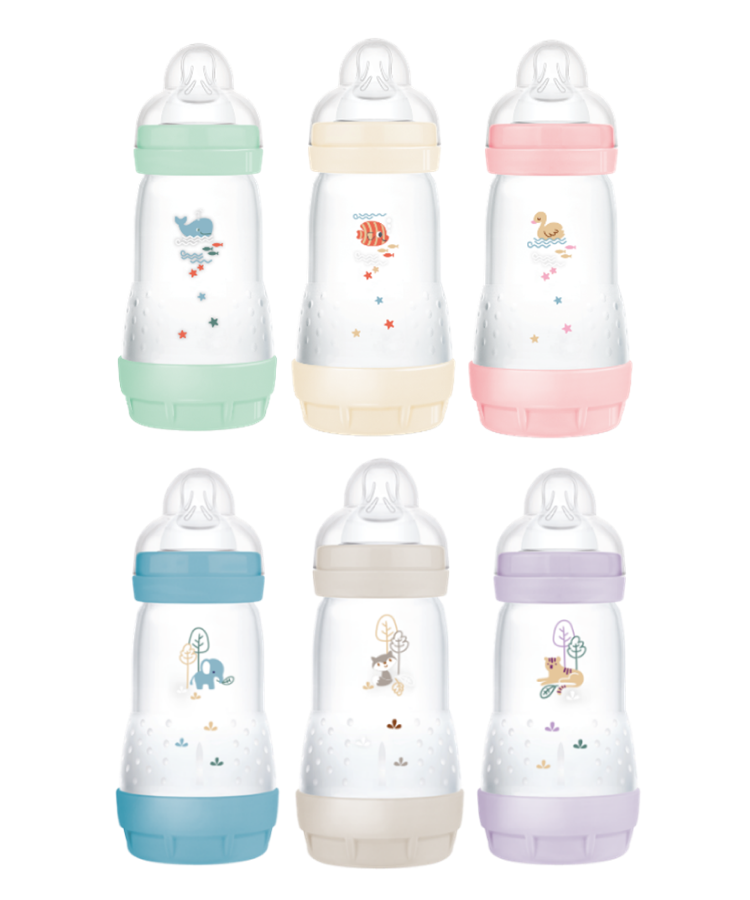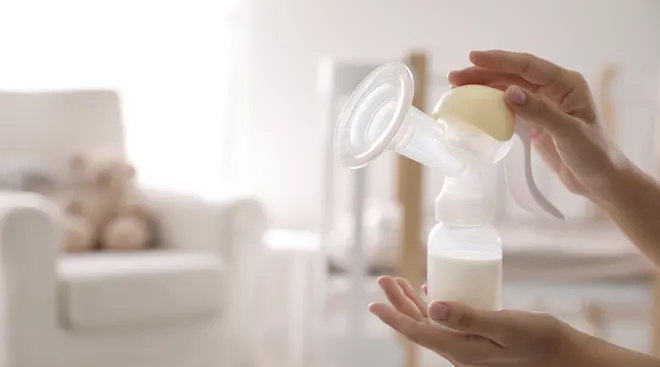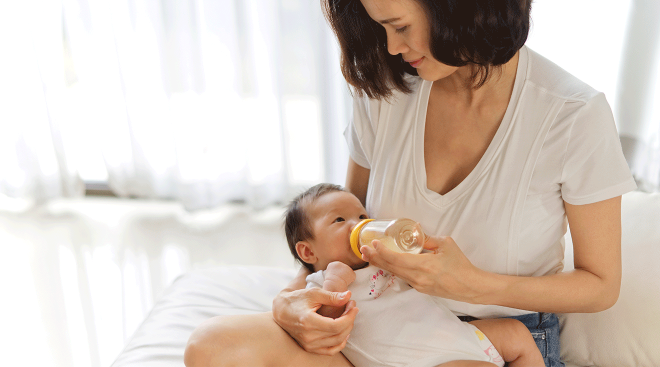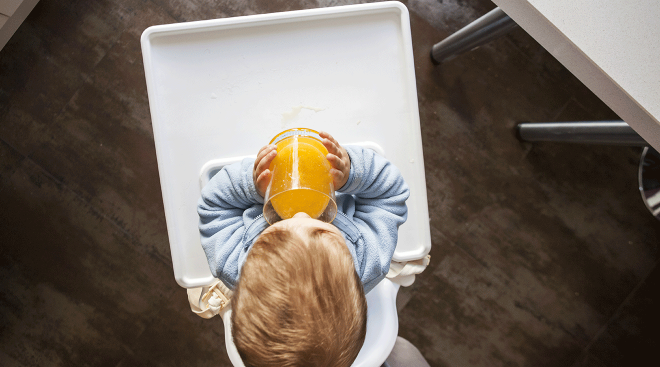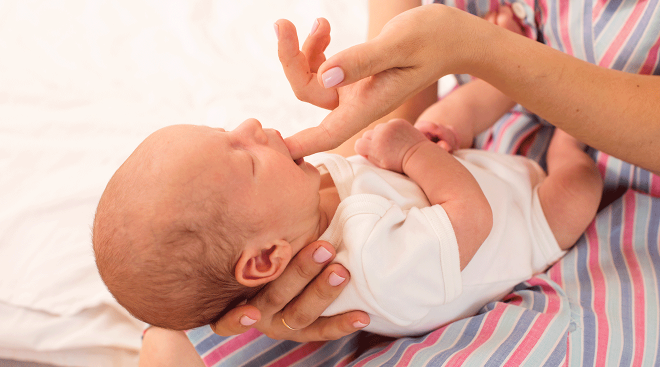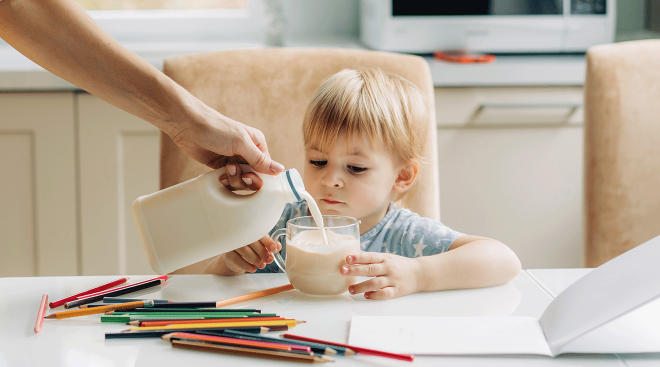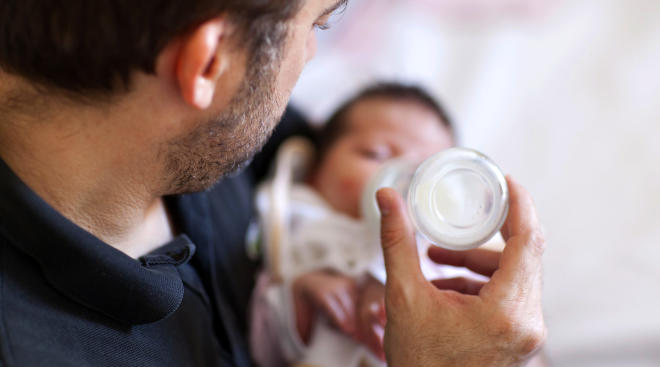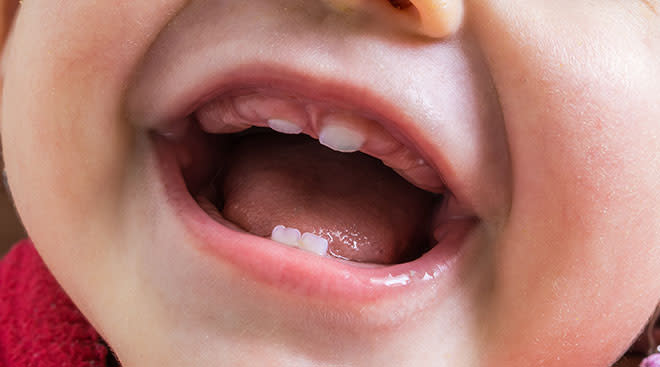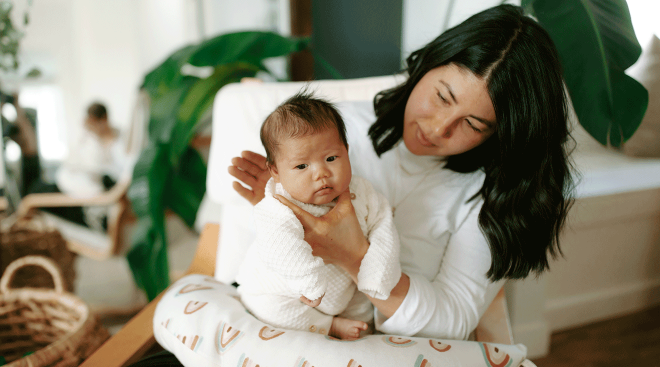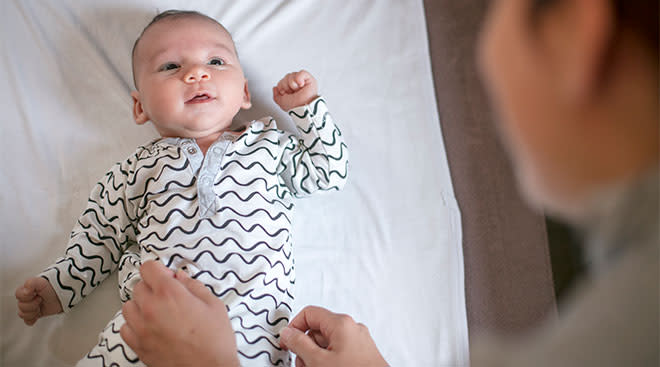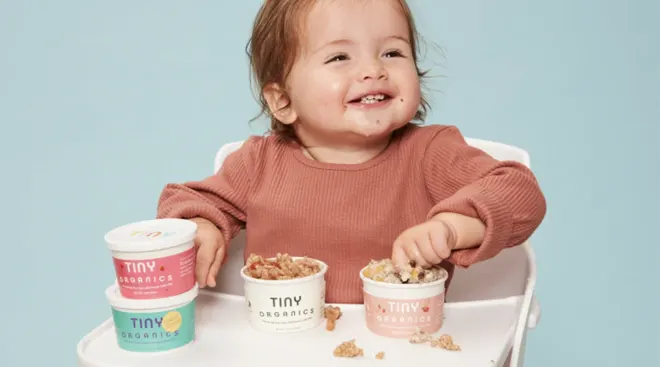The Best Feeding Advice From Experienced Parents
In baby’s earliest days, their few responsibilities are to eat, sleep and repeat, but that doesn’t mean it’s easy. Ask any new parent, and they’ll tell you about latch issues, bottle drama and the infamous gassiness. Add in your exhaustion, and getting baby fed may feel near impossible. The good news: Whether you’re breastfeeding, bottle feeding or a combination of both, successful feeding boils down to listening to your gut, taking your cues from your baby and being willing to experiment. Here, seven parents share their best tips on feeding baby however you choose.
While a lot of expecting parents may have a fine-tuned birth plan, having a feeding plan can also be helpful. Camille, a mom of a now 4-year-old in Brooklyn, NY, says she wishes she had a plan B in place prior to her daughter’s birth. “My daughter was losing weight fast, and having to research and find formula in those first days was stressful,” she recalls. “I think it can be helpful for parents to have a few options, just in case.” You can always look into a few brands and their ingredients ahead of time, to know what your choice would be.
Whether or not you’re planning on exclusively breastfeeding, it can be helpful to have a lactation specialist on call once baby is born. And while they specialize in breastfeeding, lactation consultants also have knowledge in supplementing (feeding baby both formula and breast milk) and can answer any questions you may have.
There’s a common misconception that you have to commit to one or the other—breast milk or formula—but that’s not the case. Stacy, a mom of a 7-year-old and 4-year-old in Denver, wishes she had understood supplemental feeding prior to the birth of her eldest child. “I thought you had to choose breast milk or formula. If I had known there was a way I could do both, I wouldn’t have put so much pressure on myself and would have saved myself a lot of anxiety.”
Before baby can talk, burps and gas are all acceptable forms of communication. When Kate, mother of Lenny (now 9 months) of Englewood, CO, discovered that she would burp and seem uncomfortable after each bottle feed, she made the decision to test out a few different types of bottles. “We noticed that Lenny was visibly more comfortable after drinking from a MAM bottle,” notes Kate, which most likely has to do with the unique way MAM bottles are designed. A valve in the base of the bottle prevents the formation of air bubbles and stops liquid from foaming, which means baby swallows less air while feeding (aka burps less) and will be less colicky, too.
Kate advises new parents to pay attention to how baby responds after a feed, and to experiment to see how their behavior changes, whether you’re bottle-feeding or breastfeeding. A new bottle, a different position or a slower-paced feeding could make all the difference.
Lauren, mom of 8-month-old Leighton, in Westfield, IN, always assumed she would breastfeed. But a medically necessary C-section created unforeseen difficulties. “Leighton was a month early, and I had low milk supply, so I had to supplement. I was pumping and only producing milliliters. Trying to get Leighton to eat enough was so stressful. Once we made the decision to switch to formula only, I felt more present. I could enjoy being with her.” Lauren’s advice to other parents is to assess your feelings and seek help. This could be working with a lactation counselor, talking with your child’s pediatrician or even just taking time for yourself while your partner watches baby. “Every feeding journey is different. Be gentle, be flexible and know that you matter,” says Lauren.
You don’t have to commit to just formula to use bottles. If you’re breastfeeding, experts advise introducing a bottle once a feeding routine is established—usually around 4 weeks—and pumping once a day after a feed. It can also be helpful to look for bottles that are designed to help babies switch from breast to bottle, like MAM Easy Start Anti-Colic Bottles.
Talking with your pediatrician can help you figure out a pumping and feeding schedule that works for you. Allowing someone else (whether it’s your partner, parents or anyone else in your “village”) to feed baby can give breastfeeding mothers a well-deserved break. Emily, a mom of a 6-month-old and a 3-year-old in Stillwater, NJ, chose to prioritize introducing bottles to both her daughters early on. “It was really important that we introduced bottles even before we ‘had to,’ so that my husband could feed our children at night, and so I would have peace of mind that someone else could feed them besides me.”
Dani, a mom of three in Boston, who switched between breastfeeding and bottle-feeding didn’t realize that nipples on bottles are often designed for different ages until she had her third child. “My first child was using a newborn nipple until he was 8 months,” she recalls. He would become frustrated and wouldn’t drink as much as she had hoped; Dani hadn’t realized it was likely due to the slow flow of the nipple.
MAM bottles have five different nipple sizes that determine how fast or slow the flow of milk will be. Their newborn nipple is even designed with an opening to allow for the thinner milk of baby’s first weeks. And as baby grows, you can buy new nipple sizes as needed. If your child suddenly seems fussy or disinterested when feeding, it may be a sign that the flow of the nipple is no longer appropriate for their age.
When you’re heading out with baby, pack the bottles you need, plus extra, in case of an emergency. Jane, mom of Luca, 7 months, in Lilburn, GA, recommends having a clean and empty extra bottle, along with measured-out formula, and whatever water you’re using, in case you need to make an unexpected bottle on the move. With a just-in-case bottle, you have flexibility to change plans on the go if you meet up with a friend or decide to take advantage of baby’s impromptu nap and dip into a café to have lunch.
Similarly, Lauren and her husband found it invaluable to premake bottles in the evening, so all they had to do was open the fridge when it came time for late-night feeds. “It really helped in those newborn days.” Prepared formula is typically safe to keep refrigerated for 24 hours, and pumped breast milk can be stored in the fridge for up to four days.
Jane was worried that bottle feeding would mean she’d miss out on emotional closeness with her son. But she found that was far from the case. “Sometimes, I’m feeding him a bottle and he’ll reach out to touch my face or pinch my cheeks and be all cute. I always heard moms who breastfeed have those experiences, and I was so worried bottle feeding meant that wouldn’t happen. But those are such reassuring moments,” she says. Having a special feeding ritual, like sitting quietly in the nursery and listening to music during a pre-bedtime feed can be a great way to make the most of those moments. Whether breastfeeding, bottle feeding or a combination of both, there are many intimate memories like this ahead.
Our pick: MAM Easy Start Anti-Colic Bottles, available in sizes to grow with baby, starting at $8.99, Amazon.com.
With various bottle sizes and five nipple sizes, MAM bottles are designed to mimic the feeling of breastfeeding with a softer, flat nipple that has a 94% acceptance rate*. Plus, their Easy Start Anti-Colic bottle helps minimize fussiness and allows for greater comfort during feeds. Bonus: the self-sterilizing feature allows you to easily disinfect all the pieces in the microwave. Whether you’re primarily breastfeeding with the occasional bottle thrown in or bottle feeding exclusively, MAM offers flexibility and comfort for both you and baby.
*Market research 2009–2014, tested with 1,349 babies.
Navigate forward to interact with the calendar and select a date. Press the question mark key to get the keyboard shortcuts for changing dates.
































